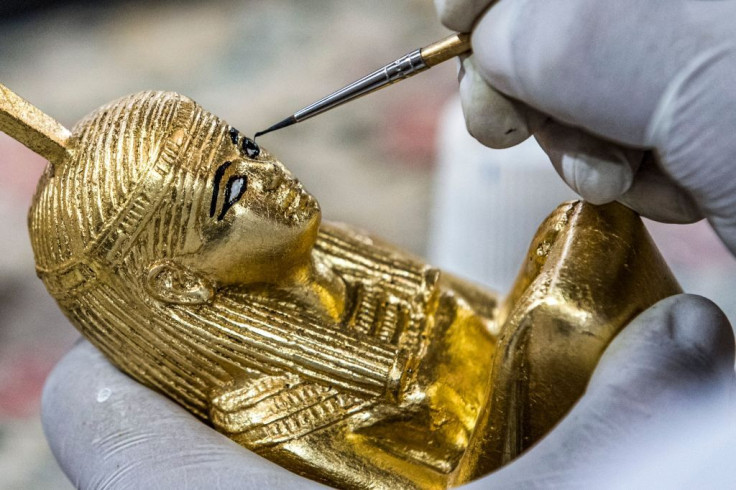It's been often suggested that Egyptian Queen Nefertiti lies in a hidden chamber adjacent to her stepson’s burial chamber. And now a British Egyptologist has said that a discovery of hidden hieroglyphics within Tutankhamun’s tomb that lends weight to the theory.
The theory remained unproven after inconclusive radar scans, but it has been given fresh push following the new clue, said Nicholas Reeves, a former curator in the British Museum’s Department of Egyptian Antiquities. According to The Guardian, he realized that cartouches depicting Tutankhamun being buried by his pharaonic successor, Ay, had been painted over cartouches of Tutankhamun burying the Egyptian Queen.
Born around 1370 BC, she is popular for her beauty and being a powerful queen. She was married to King Akhenaten, who was the father of King Tutankhamun, reported BBC. Reeves said that he can now show that, under the cartouches of Ay, are cartouches of "Tutankhamun himself." It proves that that scene originally showed "Tutankhamun burying his predecessor, Nefertiti. You would not have had that decoration in the tomb of Tutankhamun.”
On the north wall that's decorated, the later cartouches show Ay holding a ceremonial adze. He is seen performing the ritual of “opening the mouth” of the mummy, to restore the dead person's five senses. Reeves said that close inspection of Ay’s cartouches reveals clear and "underlying traces of an earlier name – that of Tutankhamun." He noted that in its original version, this scene had shown Tutankhamun performing the "funerary ritual for the tomb’s original owner, his immediate predecessor … Nefertiti.”
He added that this conclusion finds confirmation in the figures’ facial profiles. There is the snub nose and chubby under-chin of the (figure) that's currently labeled as "Ay follow … precisely the standardized facial outline adopted for official representations of Tutankhamun at the very start of his kingship." He noted that the face of the mummy carries the "indisputable features of Nefertiti."
Meanwhile, Egyptologist Zahi Hawass believes that he’s finally made the discovery of the tomb of Nefertiti that many archaeologists have been searching for long. The Egyptologist is part of an Egyptian-led mission that announced last December that antiquities found around Luxor resembled amulets known to belong to King Tut, reported Artnet News.
He said that they already have DNA from the 18th dynasty mummies, "from Akhenaten to Amenhotep II or III and there are two unnamed mummies labeled KV21a and b." He shared that this month, the team will be able to announce the discovery of the "mummy of Ankhesenamun, Tutankhamun’s wife, and her mother, Nefertiti.”

© 2025 Latin Times. All rights reserved. Do not reproduce without permission.





